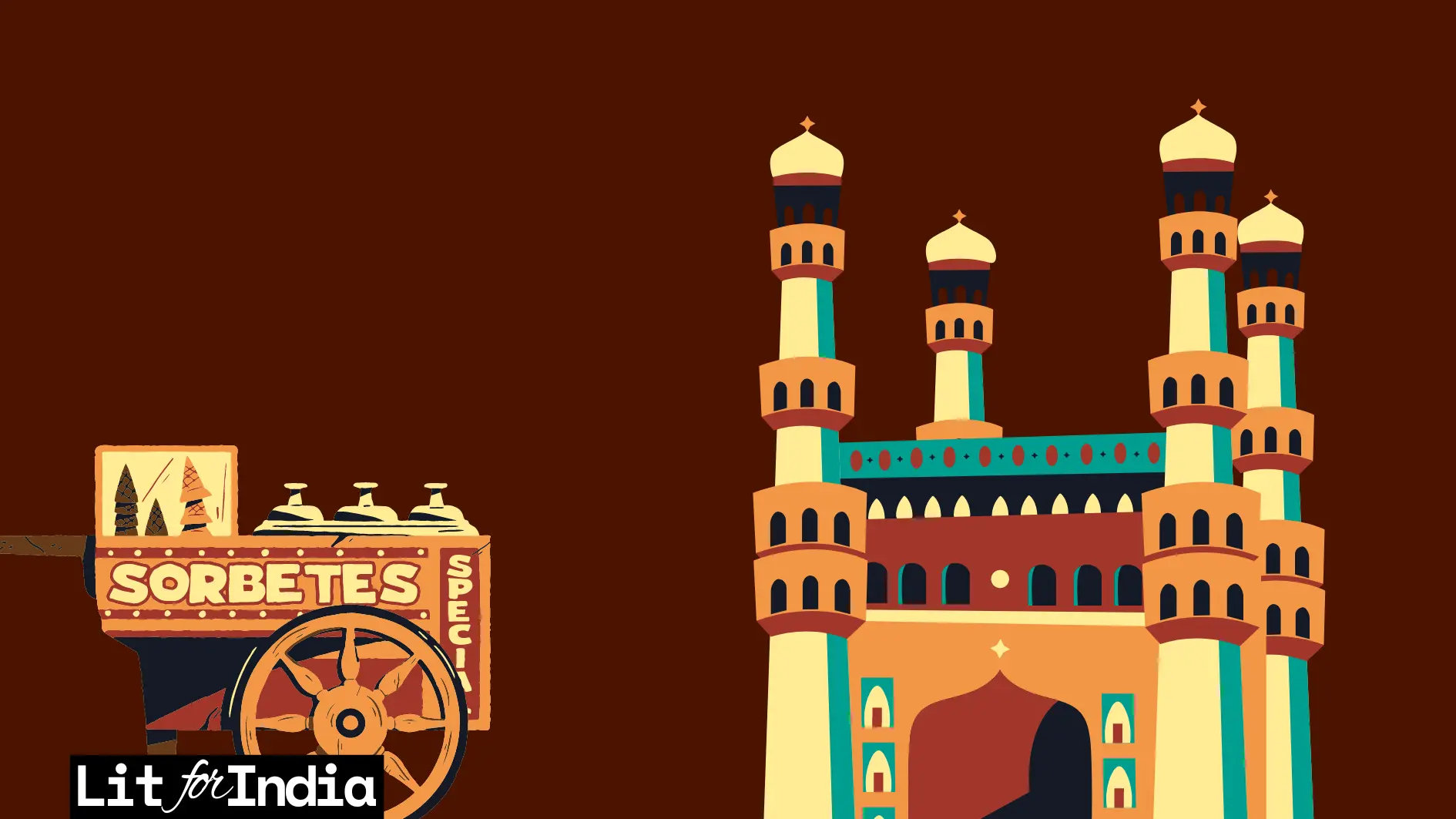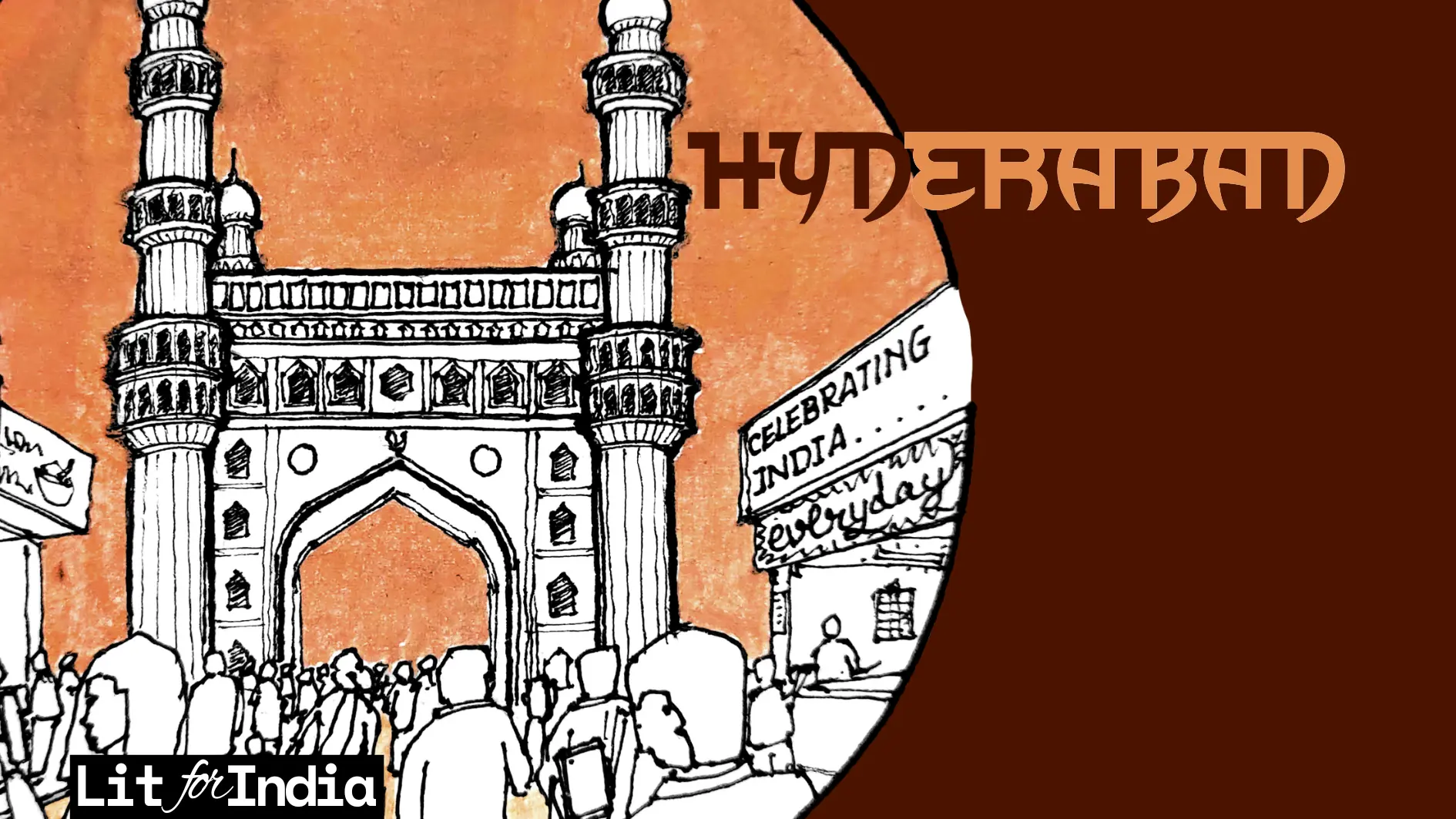In the Bazaars of Hyderabad by Sarojini Naidu introduces the reader to the streets of Hyderabad where vendors and merchants like the common man are found. She tries to convey a message through the kinds of people she meets as the poem progresses. In this poem, Sarojini Naidu highlights the simple life of ordinary men and women who earn for their survival. Let’s discuss the summary and analysis of the poem in detail.

In The Bazaars of Hyderabad by Sarojini Naidu
Stanza 1
What do you sell O ye merchants ?
Richly your wares are displayed.
Turbans of crimson and silver,
Tunics of purple brocade,
Mirrors with panels of amber,
Daggers with handles of jade.
Stanza 2
What do you weigh, O ye vendors?
Saffron and lentil and rice.
What do you grind, O ye maidens?
Sandalwood, henna, and spice.
What do you call, O ye pedlars?
Chessmen and ivory dice.
Stanza 3
What do you make, O ye goldsmiths?
Wristlet and anklet and ring,
Bells for the feet of blue pigeons
Frail as a dragon-fly’s wing,
Girdles of gold for dancers,
Scabbards of gold for the king.
Stanza 4
What do you cry, O ye fruitmen?
Citron, pomegranate, and plum.
What do you play ,O musicians?
Cithar, sarangi and drum.
what do you chant, O magicians?
Spells for aeons to come.
Stanza 5
What do you weave, O ye flower-girls
With tassels of azure and red?
Crowns for the brow of a bridegroom,
Chaplets to garland his bed.
Sheets of white blossoms new-garnered
To perfume the sleep of the dead.
Summary of In The Bazaars of Hyderabad
Stanza 1
In the Bazaars of Hyderabad by Sarojini Naidu is a poem that talks about the life of ordinary street vendors thriving for life. The poem opens with the speaker asking the merchants what they sell. The merchants respond with a vivid description of luxurious items – crimson and silver turbans, tunics of purple brocade, amber-detailed mirrors, and jade-handled daggers.

Stanza 2
The speaker moves on, asking a vendor what they are weighing. The vendor replies with a list of food staples like saffron, lentils, and rice. The speaker then asks maidens what they are grinding, and they answer with beauty products like henna, sandalwood, and spices. In the end, the speaker inquires about what peddlers are selling, and they mention luxury games like dice and chessmen made from ivory.
Stanza 3
The speaker visits a jewellery shop and asks the goldsmith what ornaments they create. The goldsmith boasts intricate jewellery made with precious stones and gleaming gold. “Bells for the feet of blue pigeons. Frail as a dragonfly’s wing, Girdles of gold for dancers, Scabbards of gold for the king.” Is the reply of the goldsmith.
Stanza 4
In the poem, In the Bazaars of Hyderabad by Sarojini Naidu, the title describes a marketplace, and a fruit vendor would be an obvious person being there. She meets the fruit vendor and asks him what kind of fruits he has. The vendor replies with “Citron, pomegranate, and plum.” The speaker also gets to meet a musician about the instruments they play, “Cithar, sarangi, and drum,” which are likely to be played in Hyderabad. In this stanza, the speaker meets the magician, and they reply with “spells for aeons to come.” In this line, Aeons refer to incredibly long periods of time, essentially forever. So, “spells for aeons to come” could literally describe the magicians performing magic that will have lasting effects, perhaps even becoming legendary and practised for generations.
Stanza 5
In the end, the speaker encounters a weaver and asks about the cloth they produce. The weaver describes beautiful fabrics rich in colours and textures like kinkhabs, muslins, and tissues. The speaker seems to be overwhelmed by the sights and sounds of the bazaar. They reflect on the culture and heritage present in the marketplace. In the Bazaars of Hyderabad by Sarojini Naidu, the bustling marketplace is filled with life and celebration (wedding preparations). The flower sellers catering to both the bride and the dead create a juxtaposition. It suggests that life and death coexist, and even in moments of happiness, we are aware of our impermanence.
Analysis of In the Bazaars of Hyderabad
Stanza 1
In the poem, In the Bazaars of Hyderabad by Sarojini Naidu, the stanza follows a similar pattern and structure of asking questions to the different vendors, fruitmen etc. The first stanza introduces the reader to the merchants, which is an indirect way of focus on the people selling items. In the line, specific items are mentioned like “tunics of purple brocade” and “mirrors with panels of amber.” This shows the richness of exotic beauty that is stored in a crowded marketplace. This piques the reader’s curiosity about the market’s other treasures.

Stanza 2
The second stanza of the poem offers a glimpse into the practical and aesthetic aspects of the bazaar. The Saffron hints at rich flavours, while lentils and rice represent the sustenance of life. Sandalwood and henna suggest cultural and traditional practices, and spices infuse cooking aromas. The poem also portrays a diversity of labourers. It subtly highlights the gender roles. Vendors, possibly men, handle grains, while maidens, likely young women, take care of beauty and culinary elements.
Stanza 3
In the poem, the speaker focuses on the craft of a goldsmith and the variety of items they create. She starts the conversation with the goldsmith with the question, “What do you make, O ye goldsmiths?” The goldsmiths respond, listing the ornaments they craft: “Wristlet and anklet and ring.” These are all wearable jewellery pieces for adorning the body. The final two lines are “Bells for the feet of the pigeons” and “as frail as the wing of a bee.” This adds a layer of beauty and craftsmanship to the goldsmith’s work. It also suggests a connection between human materialistic wants and the natural world.
Stanza 4
The stanza 4 of “In the Bazaars of Hyderabad” by Sarojini Naidu shifts the focus from merchants selling goods to people offering experiences, like musicians in the end. Why does the speaker do this? The poem so far has focused on physical goods sold in the bazaar, like fabrics, spices, jewellery, and fruits. By introducing musicians, the speaker explores the experience beyond just shopping. It shows that the bazaar is a place for grocery shopping, sights, sounds, and cultural immersion.
Stanza 5
The stanza 5 adds an emotional touch to the poem. The speaker skilfully and effortlessly conveys a deeper meaning in the end stanza. She reminds us that the bazaar is not just a place of trade but a place of life itself, where celebrations and mourning co-exist. The final line in the poem “In the Bazaars of Hyderabad” by Sarojini Naidu introduces contrasting imagery. Here, the flower girls are making “sheets of white blossoms” to be used for the “sleep of the dead.” These white flowers symbolize purity and peace and are used to adorn the body of someone who has passed away.
Conclusion
In the Bazaars of Hyderabad by Sarojini Naidu is a meticulously written poem that aims to portray the Hyderabad bazaar by showing its offerings and the constant flow of life within it, also making a contrast of the lives of the common people. It also talks about the gender roles present in it. By including the flower girls, she paints a picture that goes beyond just commerce. It reflects the human experiences of joy, love, and loss that take place within the bustling marketplace.

